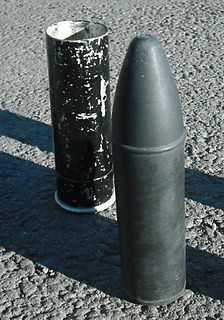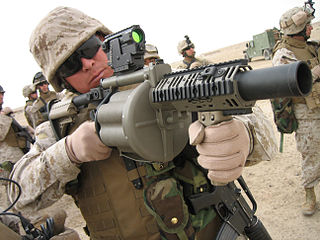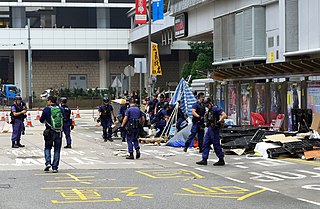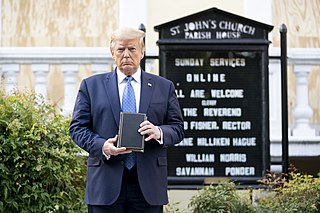
Non-lethal weapons, also called less-lethal weapons, less-than-lethal weapons, non-deadly weapons, compliance weapons, or pain-inducing weapons are weapons intended to be less likely to kill a living target than conventional weapons such as knives and firearms. It is often understood that unintended or incidental casualties are risked wherever force is applied, but non-lethal weapons try to minimise the risk of casualties as much as possible. Non-lethal weapons are used in policing and combat situations to limit the escalation of conflict where employment of lethal force is prohibited or undesirable, where rules of engagement require minimum casualties, or where policy restricts the use of conventional force. These weapons occasionally cause serious injuries or death; the term "less-lethal" has been preferred by some organizations as it describes the risks of death more accurately than the term "non-lethal", which some have argued is a misnomer.

The compound 2-chlorobenzalmalononitrile (also called o-chlorobenzylidene malononitrile; chemical formula: C10H5ClN2), a cyanocarbon, is the defining component of tear gas commonly referred to as CS gas, which is used as a riot control agent. Exposure causes a burning sensation and tearing of the eyes to the extent that the subject cannot keep their eyes open, and a burning irritation of the mucous membranes of the nose, mouth and throat, resulting in profuse coughing, nasal mucus discharge, disorientation, and difficulty breathing, partially incapacitating the subject. CS gas is an aerosol of a volatile solvent (a substance that dissolves other active substances and that easily evaporates) and 2-chlorobenzalmalononitrile, which is a solid compound at room temperature. CS gas is generally accepted as being non-lethal. It was first synthesized by two Americans, Ben Corson and Roger Stoughton, at Middlebury College in 1928, and the chemical's name is derived from the first letters of the scientists' surnames.

Rubber bullets are a type of Baton round. Despite the name, rubber bullets typically have either a metal core with a rubber coating, or are a homogeneous admixture with rubber being a minority component. They are a less lethal alternative to metal projectiles, but can still cause serious injuries such as blindness, permanent disability, and death.

A plastic bullet or plastic baton round (PBR) is a less-lethal projectile fired from a specialised gun. Although designed as a less-lethal weapon, they have caused a number of deaths. Plastic bullets are intended to be shot directly at the subject, causing bruising, or even broken bones when used correctly. They are generally used for riot control. Plastic bullets were invented in 1973 by the British security forces for use against demonstrators in Northern Ireland. They were developed to replace their rubber bullets in an attempt to reduce fatalities. If misused they can still cause fatal injury.

Riot control refers to the measures used by law enforcement, military, or security forces to control, disperse, and arrest people who are involved in a riot, demonstration, or protest. If a riot is spontaneous and irrational, actions which cause people to stop and think for a moment can be enough to stop it. However, these methods usually fail when there is severe anger with a legitimate cause, or the riot was planned or organized. Riot control personnel have long used less lethal weapons such as batons and whips to disperse crowds and detain rioters. Since the 1980s, riot control officers have also used tear gas, pepper spray, rubber bullets, and electric tasers. In some cases, riot squads may also use Long Range Acoustic Devices, water cannons, armoured fighting vehicles, aerial surveillance, police dogs or mounted police on horses. Persons performing riot control typically wear protective equipment such as riot helmets, face visors, body armor, gas masks and riot shields. However, there are also cases where lethal weapons are used to violently suppress a protest or riot, as in the Boston Massacre, Haymarket Massacre, Banana Massacre, Hungarian Revolution of 1956, Kent State Shootings, Soweto Uprising, Mendiola Massacre, Bloody Sunday (1905), Ponce massacre, Bloody Sunday (1972), Tiananmen Square Protests (1989), Venezuelan Protest (2017), Tuticorin Massacre (2018), Hambacher Forst (Hambi), Gaza Fence Massacres (2018), and 2019–20 Hong Kong protests.

A police riot is a riot carried out by the police; a riot that the police are responsible for instigating, escalating or sustaining as a violent confrontation; an event characterized by widespread police brutality; a mass police action that is violently undertaken against civilians for the purpose of political repression. The term "police riot" was popularized after its use in the Walker Report, which investigated the events surrounding the 1968 Democratic National Convention in Chicago to describe the "unrestrained and indiscriminate" violence that the police "inflicted upon persons who had broken no law, disobeyed no order, made no threat."

Riot police are police who are organized, deployed, trained or equipped to confront crowds, protests or riots.

In current usage a riot gun or less-lethal launcher is a type of firearm that is used to fire "non-lethal" or "less-lethal" ammunition for the purpose of suppressing riots. Less-lethal launchers may be special purpose firearms designed for riot control use, or standard firearms, usually shotguns and grenade launchers, adapted to riot control use with appropriate ammunition. The ammunition is most commonly found in 12 gauge shotguns and 37mm/40 mm grenade launchers.

Tear gas, also known as a lachrymator agent or lachrymator, sometimes colloquially known as "mace" after an early commercial aerosol, is a chemical weapon that stimulates the nerves of the lacrimal gland in the eye to produce tears. In addition, it can cause severe eye and respiratory pain, skin irritation, bleeding, and blindness. Common lachrymators both currently and formerly used as tear gas include pepper spray, PAVA spray (nonivamide), CS gas, CR gas, CN gas, bromoacetone, xylyl bromide and Mace.

A riot shotgun is a shotgun designed or modified for use as a primarily defensive weapon, by the use of a short barrel and sometimes a larger magazine capacity than shotguns marketed for hunting. The riot shotgun is used by military personnel for guard duty and was at one time used for riot control, and is commonly used as a door breaching and patrol weapon by law enforcement personnel, as well as a home defense weapon by civilians. Guns of this type are often labeled as breaching shotguns, tactical shotguns or special-purpose shotguns to denote the larger scope of their use; however, these are largely marketing terms.
The 37 mm flare or "1.5 inch" caliber is the specification for a common launching system for non-lethal and less-lethal ammunition. Such launchers are also often known as "gas guns" due to their original use by police for launching tear gas projectiles. 37mm systems are typically smoothbore as rifling is unnecessary or even detrimental to the performance of the usual projectiles.

A sponge grenade is a riot control weapon, intended to be non-lethal, which is fired from a 40 mm grenade launcher to cause confusion, or otherwise temporarily disable its target. As a single blunt force object, it is best used when aimed at a particular individual.

"Skunk" is a malodorant, non-lethal weapon used for crowd control by the Israel Defense Forces (IDF) and marketed to militaries and law enforcement around the world. It was developed and is manufactured by Odortec, with two supporting companies, Man and Beit-Alfa Technologies. The liquid's strong odor is marketed as an improvement over other crowd control weapons (CCWs) such as rubber bullets and tear gas used by the IDF against Palestinian protestors. The IDF is criticized for its tactics during deployment, including common use against people, businesses, and neighborhoods not involved in protests as a form of collective punishment.

The Special Tactical Squad is a paramilitary task force of the Hong Kong Police Force, being a sub-division of the Police Tactical Unit (PTU). It was created in June 2014 to handle protests with its main tasks being crowd control and riot control, including when the PTU suffered from heavy blockade or obstruction. Examples were obstacle removal, conducting arrests, providing first aid, etc. The STS would also conduct observational and command related tasks, to ensure and review the Police Tactical Unit's use of force and tactics are appropriate, to further improve from past events. A report by Amnesty International singled out the Special Tactical Squad and riot police for "the worst abuses" of excessive force during the 2019-20 protests, noting that "almost every arrested person interviewed described being beaten with batons and fists during the arrest, even when they were not resisting and often already restrained," along with multiple hospitalizations.

Crowd control in Jammu and Kashmir is a public security practice to prevent and manage violent riots. It is enforced by police forces through laws preventing unlawful assembly, as well as using riot control agents such as tear gas, chili grenades, and pellet guns.
Starting in May 2020, demonstrations over the police killing of George Floyd have been held in the city of Portland, Oregon, concurrent with protests in other cities in the United States and around the world. By July 2020, many of the protests, which had been held virtually every day since May 28, drew more than 1,000 participants. Protests continued into August, September, and October 2020, often drawing hundreds.

On June 1, 2020, amid the George Floyd protests in Washington, D.C., law enforcement officers used tear gas and other riot control tactics to forcefully clear peaceful protesters from Lafayette Square and surrounding streets, creating a path for President Donald Trump and senior administration officials to walk from the White House to St. John's Episcopal Church. Trump held up a Bible and posed for a photo op in front of Ashburton House, which had been damaged by a fire during protests the night before.

The city of Seattle is experiencing ongoing protests over the killing of George Floyd. Beginning on May 29, 2020, demonstrators took to the streets throughout the city for marches and sit-ins, often of a peaceful nature but which also devolved into riots. Participants expressed opposition to systemic racism, police brutality and violence against people of color.
This is a list of George Floyd protests in Alabama, United States. Protests occurred in fourteen various communities in the state.
















